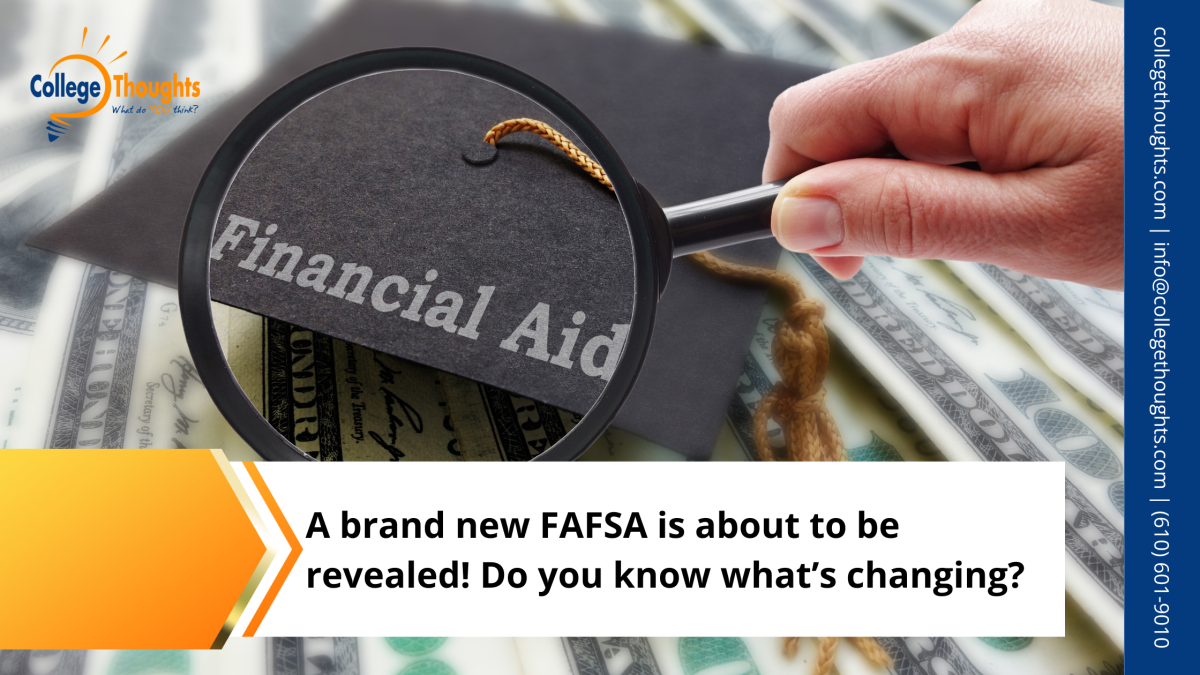
The New Digital SAT: How do you prepare for success?
September 25, 2023
Super…Clark?
March 19, 2024For 30 years, the Free Application for Federal Student Aid, or FAFSA, has been used by universities across the country to determine how much federal aid a student qualifies for. However, in 2020, the federal government voted on a measure to significantly reduce the number of questions on the FAFSA overall. It also changes how financial contributions are evaluated, and with the end of the admissions process on the horizon, it’s important to understand what these changes mean for you and your family.
FAFSA Simplification Act
The FAFSA Simplification Act was passed by the federal government in 2020 and represents a significant overhaul of the processes for awarding federal aid starting with the 2024-2025 school year. A large part of the act is reducing the number of questions from 103 to roughly 40. It’s intended to streamline the process of applying for federal aid, making it easier for students and their families to apply. In addition to having fewer questions, the new FAFSA will continue to coordinate with the IRS through the Direct Data Exchange, or DDE, meaning that once your federal taxes are filed, you can connect straight to the FAFSA and not need to fill in the information more than once.
What are the new changes?
The first, and perhaps most significant, change is that the Estimated Family Contribution, or EFC, is being replaced with the Student Aid Index, or SAI. At its core, the FAFSA uses a family’s previous year’s tax information as a way to understand a family’s financial obligations and estimate how much they may be able to contribute towards college tuition. The EFC was focused on how much an entire family could pay towards college, regardless of the number of children in college at the same time. For example, one family after filling out the FAFSA found that their EFC was $20,000, meaning that the family is expected to contribute $20,000 towards the child attending college. This number remains the same regardless of the family having 1 or 2 children in college – the estimated family contribution remains the same. However, the Student Aid Index now ties the contribution to the student individually, instead of the family as a whole. In the new FAFSA, the same family will now be responsible for $20,000 per student that goes to college. Families with children that are close in age should be aware of how this change will affect their financial decisions.
While the SAI could potentially increase how much a family is responsible for contributing, for low-income families, it could help them receive more aid and open the door for Pell Grants. In the previous FAFSA, the lowest potential contribution for a family was $0. Essentially, the FAFSA indicated that this family was unable to contribute money towards college at all. In the new system, the lowest possible contribution is $-1,500. A negative SAI means that in order for this student to be able to go to college, a school will need to not only cover tuition, but also potentially provide a stipend to this student. Lowering the threshold for the SAI will possibly make it easier for colleges to identify students with greater financial need. Additionally, students with a 0 or negative SAI will qualify for the maximum Federal Pell Grant.
When do these changes take effect?
Federal Student Aid is announcing that the new FAFSA will be available starting in December 2023. Unfortunately, they haven’t announced a specific date as of yet, and there’s a real difference between filing on December 1st and filing on December 29th. Financial aid is distributed on a first-come, first-served basis. The sooner the application is submitted, the better the chance of getting a quality financial aid package. Having the ability to file on December 1st is inherently better than having to wait until December 29th. The biggest question, of course, is what this means for students who applied early to their schools. Since deadlines are November 1st and November 15th, students will have to submit their applications without the FAFSA. We recommend that families get in touch with their schools’ financial aid offices to find out the special instructions for this year to make sure that they are not missing out on the opportunity to receive the most aid possible.
Navigating the complicated world of financial aid is tricky, but you don’t have to do it alone! Click here to read more information about the changes! Or if you’d like to speak to one of our team members directly, give us a call at (610) 601-9010 or send an email to info@collegethoughts.com!





